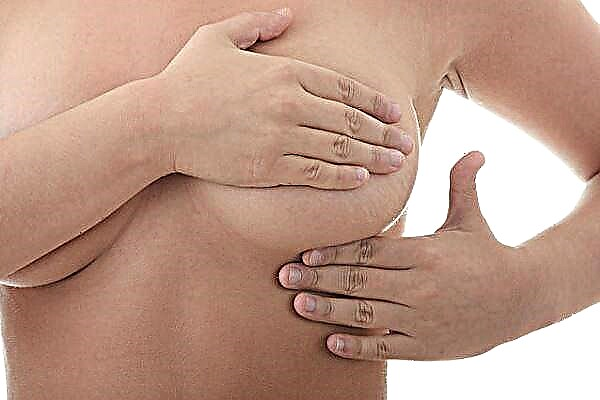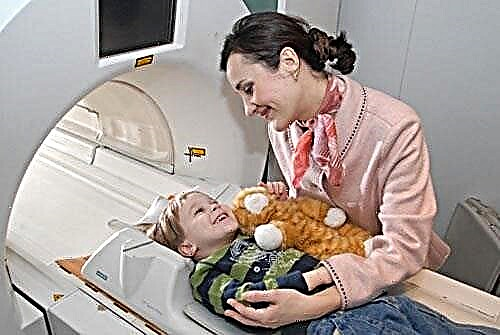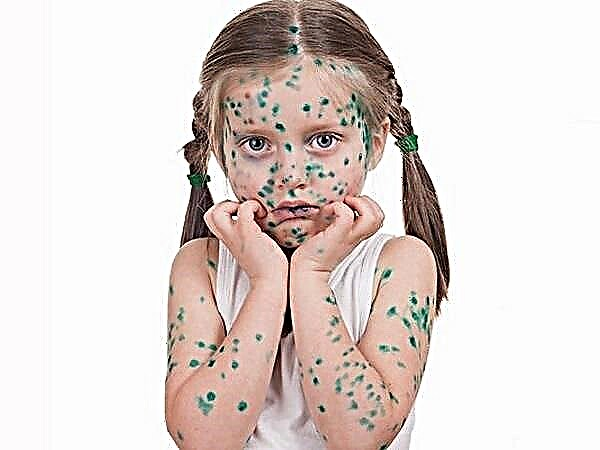
The baby's stool can be liquid normally, so the parents of a small child should know what diarrhea is in infants, because it can act as a serious symptom that requires immediate medical attention.
Signs
Parents can judge that the baby has diarrhea by the heavily liquefied stool of a larger volume. The baby's feces have an unpleasant odor, impurities may be found.
What does it look like?
The child's stool is thin and watery. It may contain inclusions and impurities. The child poops more often than usual. The color of the stool can change - the color can turn bright yellow, green and even black.
To make it easier for the called doctor to identify the problem, one of the diapers should be left until the doctor or ambulance arrives.
What should be normal?
A liquid stool consistency for babies is normal, because babies at an early age receive mostly liquid food (breast milk or formula). In children receiving only human milk, the consistency of feces is similar to liquid gruel. Mostly the stool in infants is yellow, impurities can occur in the form of a small amount of white blotches.
In the first months, the baby can poop 5-6 times a day or more. When the baby begins to eat complementary foods, the baby's stool becomes more shaped and thick. By the year, the baby often poops 1-2 times a day.
Causes
Diarrhea in an infant can be caused by:
- Infections.
- Overheat.
- Intolerance to certain foods, such as those containing lactose or gluten.
- New meals in the diet.
- Dirty toys and dishes.
- Teething.
- Some medicines.
- Dysbacteriosis.
- Mom's diet disorders.
- Acute surgical diseases (appendicitis, intestinal obstruction, peritonitis).

The baby's body can react by thinning feces to any unfamiliar product or excess of a familiar product, since the baby's intestines are still developing, and the enzymes are not as active as in grown-up children.
Diarrhea can be caused not only by pathogenic bacteria that affect the body of adults, but also by microorganisms that cause colds and other diseases, as well as microbes that are harmless to adults.
In most children, the intestines react by thinning the stool to antibiotics. To prevent the disorder, doctors prescribe lactobacilli.
A baby's stool can also be runny and greenish if the mother changes breasts frequently, resulting in the baby receiving only foremilk.
E. Komarovsky's opinion
According to the famous doctor, diarrhea, like bouts of vomiting, is a defense reaction that helps the body get rid of harmful microbes or toxic substances. So you should not take diarrhea as something that needs to be stopped immediately. On the contrary, at first the child should be helped, for example, to give an enema with boiled cool water.
The main action of the parents, according to Komarovsky, should be the replenishment of the salts and liquid lost by the baby. The best solution for this purpose is drugs that are saline solutions. They need to be diluted with boiled water and given to the baby to drink. You can also give the baby tea, a decoction of dried fruits, a decoction of herbs, mineral water and any other liquid. It is desirable that the drinking temperature is about +37 degrees, then the liquid will be absorbed faster.

Parents should always remember that the worst thing in case of any diarrhea is the loss of salt and fluid by the child's body. Since small children have small reserves, there is a real threat to their health. Komarovsky advises to see a doctor if diarrhea begins in a child under 1 year old, and there is no improvement in the condition within 24 hours. If the condition has improved, the child should not be given a lot of food. Give the crumb, receiving complementary foods, rice porridge, cottage cheese, tea in a small amount.
Associated symptoms
Diarrhea is rarely the only symptom, and the presence of other changes helps to establish the cause of the loose stools.
Temperature
An increase in temperature with diarrhea should immediately alert parents. If the baby poops more and more often, and the temperature has exceeded 38 degrees, urgently call a doctor.
Fever and vomiting
Such signs probably indicate an intestinal infection (quite often babies are affected by rotavirus), but they can also be manifestations of acute surgical pathologies, for example, intussusception or appendicitis. The baby's skin is dry, the baby weakens quickly. All these symptoms are very alarming and should be the reason for calling an ambulance.
With blood
Most often, blood impurities in the feces indicate damage to the large intestine.
Diarrhea without fever and vomiting
If the general condition of the baby is not changed, but the stool is liquid and plentiful and there are signs of imminent appearance of teeth, such diarrhea may be during teething. Stool changes without fever can also indicate problems with enzymes, such as lactase.
Foamy, profuse diarrhea with an unpleasant odor can occur with gluten intolerance. Also, increased stool frequency without fever and bouts of vomiting can be with cystic fibrosis. The feces of a child with such a hereditary disease will be a viscous consistency, fetid and shiny.
A change in diet, stress, acclimatization and similar reasons that cause neuro-reflex irritation of the intestines and increased peristalsis also lead to diarrhea, in which the body temperature does not rise.

Urgent care
More often, diarrhea is a mild disorder that is quickly eliminated with timely treatment.
Diarrhea becomes severe if blood or mucus appears in the stool, the child starts vomiting, the body temperature rises above 38 degrees, there are signs of dehydration. A child needs emergency help immediately, even before the doctor arrives. Actions will differ depending on the severity of the condition of the baby.
With a weak form
- If the baby is breastfeeding, he should continue to breastfeed, but reduce the amount of feedings.
- If the child is already being given complementary foods, then solid food should be temporarily excluded from his diet.
- An artificial kid should dilute the mixture by half with water. If the child is hungry, feed the diluted food more often.
- Do not increase the volume of food until your baby's stool begins to normalize.
- If in 2-3 days mild diarrhea has not stopped, you should consider it as a severe form and call a doctor immediately.
- A recovering baby can return solid food to the diet, while giving 1 type of product per day. First, you should give dishes with gelatin, then an apple and orange juice, then eggs and meat, then porridge, followed by vegetables, starchy foods and fruits.
- On the first day, give only a third of your usual serving of solid food, on the second, 60%, and only on the third, the entire serving.
- New foods cannot be introduced into the diet of crumbs with diarrhea.

In severe form
While you are waiting for a doctor, whom you must definitely call for severe diarrhea, give your baby a drink for which you take 250 ml of water, a tablespoon of sugar and three quarters of a teaspoon of salt. Give such a mixture to a waking child in the amount in which he drinks it (30-120 ml per day).
When your baby's bowel movements begin to normalize, start feeding your baby, gradually changing your diet every day or every two days:
- First feed your baby with half-diluted milk, then add sugar to the diluted milk (on the first day add a tablespoon for one serving, on the second two tablespoons), then you can give regular milk and start adding solid food the next day.
- If the stool becomes runny again, go back two steps, and if the diarrhea gets worse, go back to the very beginning of the treatment (water with sugar and salt).
Foods that cause diarrhea
After eating beets, apples, pears, cucumbers, cabbage and other products, the baby may have diarrhea. These products have a laxative effect. They should be introduced into the diet of both a nursing mother and a grown-up baby, ready for complementary foods, very carefully.

When is an urgent need to run to the doctor?
A child should be examined by a doctor immediately if:
- He is very pale, his skin and lips are dry.
- The baby has a high fever and vomiting.
- You suspect medications are causing the diarrhea.
- The child's urine has darkened, the fontanelle sinks.
- The child's body weight decreases.
- The skin of the crumbs was covered with a rash.
- Impurities of blood are visible in the stool.

What to do?
It is important to remind that diarrhea in children of the first year of life is not dangerous in itself, but as a reason for the loss of salts and fluid. And therefore, the first actions of adults should be aimed at eliminating these losses. Give your child something to drink, cut out solid foods, and have their temperature measured regularly.
How to treat?
You need to treat diarrhea immediately, providing the baby with first aid in the form of special salt solutions.
In addition to drinking plenty of fluids, tightening the diet and giving the baby saline solutions, the treatment of severe diarrhea often includes the intake of adsorbents and lactobacilli.
Any medicines can be given to the baby only after consulting a pediatrician. The doctor will help you pinpoint the cause of the diarrhea and act on it. You should also talk to a specialist about the use of folk remedies (rice water for diarrhea, jelly, blueberry decoction and others).



